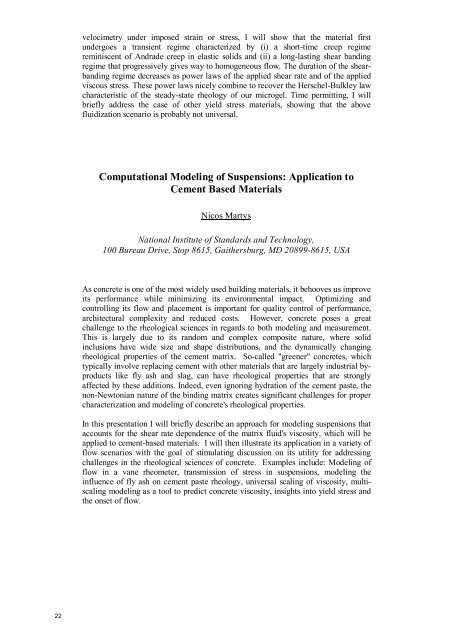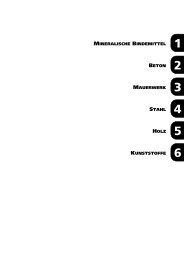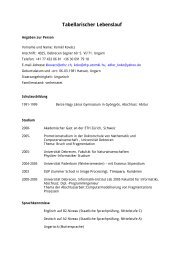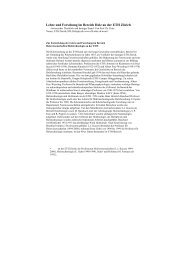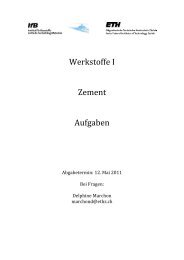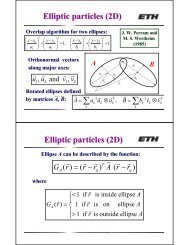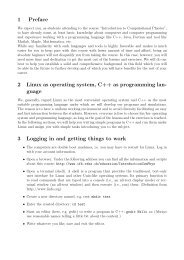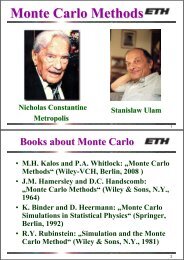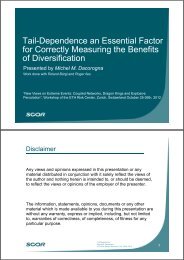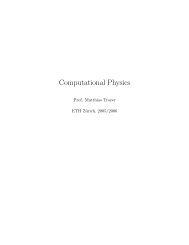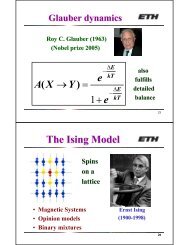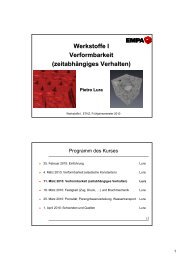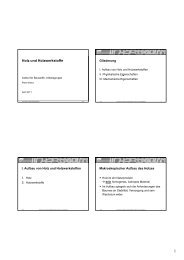Here - Institute for Building Materials - ETH Zürich
Here - Institute for Building Materials - ETH Zürich
Here - Institute for Building Materials - ETH Zürich
Create successful ePaper yourself
Turn your PDF publications into a flip-book with our unique Google optimized e-Paper software.
velocimetry under imposed strain or stress, I will show that the material firstundergoes a transient regime characterized by (i) a short-time creep regimereminiscent of Andrade creep in elastic solids and (ii) a long-lasting shear bandingregime that progressively gives way to homogeneous flow. The duration of the shearbandingregime decreases as power laws of the applied shear rate and of the appliedviscous stress. These power laws nicely combine to recover the Herschel-Bulkley lawcharacteristic of the steady-state rheology of our microgel. Time permitting, I willbriefly address the case of other yield stress materials, showing that the abovefluidization scenario is probably not universal.Computational Modeling of Suspensions: Application toCement Based <strong>Materials</strong>Nicos MartysNational <strong>Institute</strong> of Standards and Technology,100 Bureau Drive, Stop 8615, Gaithersburg, MD 20899-8615, USAAs concrete is one of the most widely used building materials, it behooves us improveits per<strong>for</strong>mance while minimizing its environmental impact. Optimizing andcontrolling its flow and placement is important <strong>for</strong> quality control of per<strong>for</strong>mance,architectural complexity and reduced costs. However, concrete poses a greatchallenge to the rheological sciences in regards to both modeling and measurement.This is largely due to its random and complex composite nature, where solidinclusions have wide size and shape distributions, and the dynamically changingrheological properties of the cement matrix. So-called "greener" concretes, whichtypically involve replacing cement with other materials that are largely industrial byproductslike fly ash and slag, can have rheological properties that are stronglyaffected by these additions. Indeed, even ignoring hydration of the cement paste, thenon-Newtonian nature of the binding matrix creates significant challenges <strong>for</strong> propercharacterization and modeling of concrete's rheological properties.In this presentation I will briefly describe an approach <strong>for</strong> modeling suspensions thataccounts <strong>for</strong> the shear rate dependence of the matrix fluid's viscosity, which will beapplied to cement-based materials. I will then illustrate its application in a variety offlow scenarios with the goal of stimulating discussion on its utility <strong>for</strong> addressingchallenges in the rheological sciences of concrete. Examples include: Modeling offlow in a vane rheometer, transmission of stress in suspensions, modeling theinfluence of fly ash on cement paste rheology, universal scaling of viscosity, multiscalingmodeling as a tool to predict concrete viscosity, insights into yield stress andthe onset of flow.22


